Bed bug infestations can be annoying, but fortunately, you can take steps to get rid of them. However, after dealing with bed bugs, their fecal matter stains on walls, beds, and mattresses can be very unpleasant.
How to identify bed bug droppings? They can be found in places where they feed and breed. Their feces’ color ranges from dark brown to dark red to black and are circular patches, similar to a ball pen dot, roughly 1 mm in diameter. The droppings are liquid stains that will smear if wiped. Dried bed bugs’ feces can be soft and smooth.
This article will go over bed bug droppings in further detail and help determine their exact appearance and effectively clean them.
What Do Bed Bug Droppings Look Like?
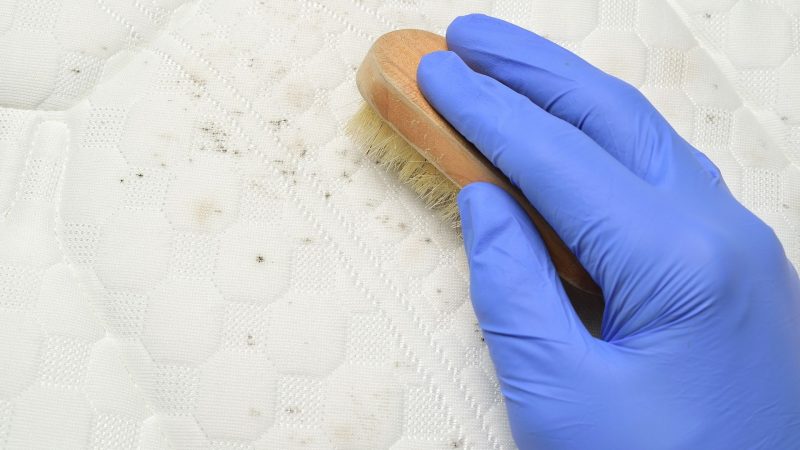
The droppings of bed bugs resemble ink stains. They look like a cluster of small spots in the area where bed bugs are infesting. The fecal matter of bed bugs contains partially digested blood. As a result, bed bug feces range in color from dark brown to dark red to black. They are a type of liquid feces that can stain walls, wood, bedding, and mattresses.
How Big Are Bed Bug Droppings?
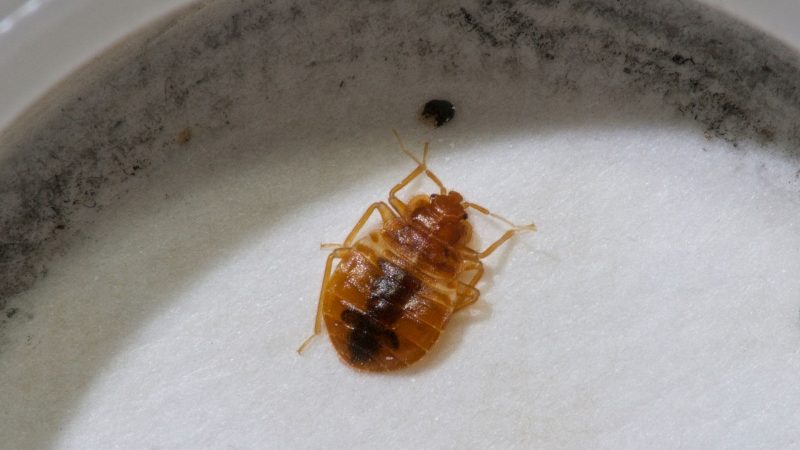
The size of bed bug droppings is about 1 millimeter. It looks pretty much like a regular pen dot. If they’re wiped or smeared, they’ll merely be bigger to look at.
Are Bed Bug Feces Hard or Soft?
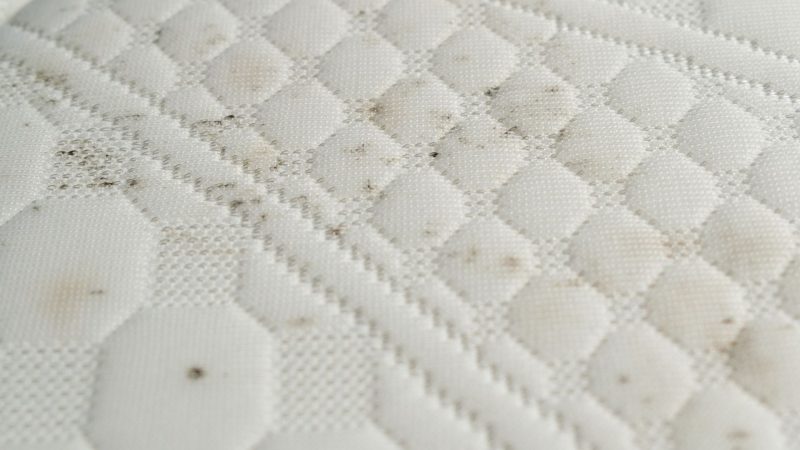
Since bed bugs’ feces are made up of digested blood, the droppings are more likely to be wet. It feels soft and smooth to the touch when dried up. It will leave a stain as it dries and is not hard enough to pick up or hold.
Does Bed Bug Poo Smell?
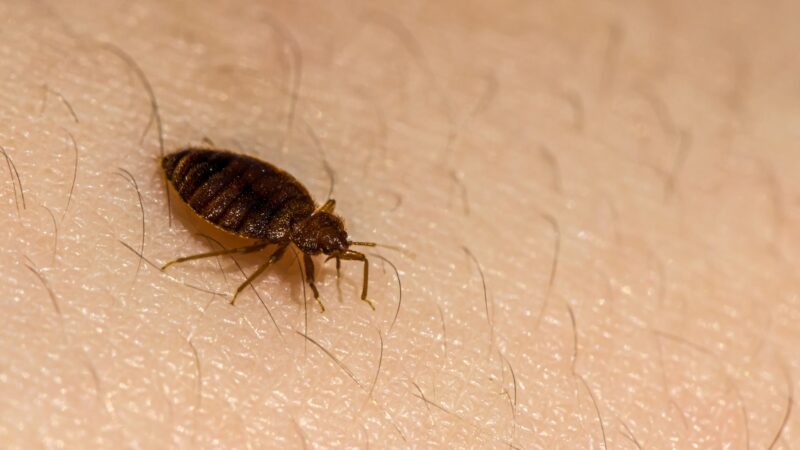
Bed bugs poop has a distinctive rusty smell, similar to that of dried blood. The majority of their feces came from digested blood which results in a rusty smell.
Does Bed Bug Feces Wipe Off?
Bed bugs’ feces can’t be easily wiped off, especially on porous surfaces. They will leave stains in the same way that regular ink does. If the feces are in a fabric, they will be absorbed and dried, resulting in a stain. However, bed bugs’ feces can be cleaned, and stains removed.
Can Bed Bug Droppings Be Picked Up?
Bed bugs droppings can’t be picked up. They are liquid feces, and thus when they are excreted, they are initially wet. If the fecal matter of bed bugs is on a solid or non-absorbent surface, such as non-absorbent wood or tiles, they can dry out and can then be swept away. However, dried bed bugs’ feces are still too small to hold or pick up.
Bed Bug Droppings Look Like in Specific Areas
What Do Bed Bug Droppings Look Like on a Mattress?
Droppings of bed bugs on the mattress will resemble dark red to black ink stains. They look like ink drops splattered all over the mattress’s underneath, sides, corners, and edges. It can also resemble smudges of dark red ink. The mattress will then absorb the feces and will also look like dried dirt.
What Does Fecal Matter From a Bed Bug Look Like on a Bed Frame?
The feces of bed bugs on bed frames will look like vandalism done with a black pen. Bed bug droppings are liquid that can be easily smeared over bed frames and resemble drawings of dots and little short lines. If the bed frame is made with fabric material, it will absorb the bed bugs’ feces and will look like dried ink stains or dried dirt.
What Do Bed Bug Droppings Look Like on Wood?
The droppings of bed bugs on wood will appear like black ink dots. As soon as the wood absorbs the liquid feces and dries up, an impression of marker dots will be visible on the wood.
What Do Bed Bug Droppings Look Like on the Ceiling?
Bed bugs have the ability to climb walls and even climb over ceilings to hide and breed. Similar appearance on bed frames and wood, bed bugs’ fecal matter on ceilings will look like ink dots from a dark marker. Bed bugs droppings in ceilings are more on dots and spots because it is less likely to be smeared.
How to Clean Up Bed Bug Feces?
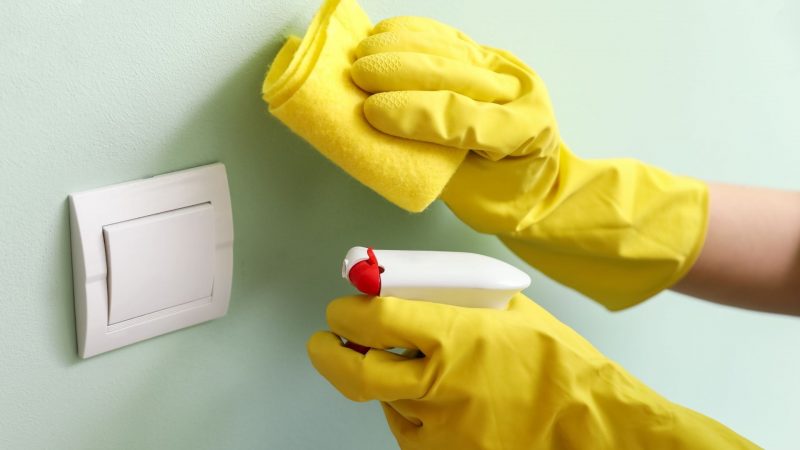
The feces of bed bugs are known to stain, and cleaning them is similar to dealing with bloodstains. Here are a few steps in cleaning bed bug feces:
Cleaning Bed Bugs Droppings on Mattresses
Step 1: Soak them in cold water with regular detergent and let them sit for up to 30 minutes.
Step 2: When stains start to fade, wash the mattress with cold water and use any regular detergent soap.
Step 3: If there are still spots and stains, remove any remaining stains with hydrogen peroxide or ammonia solutions.
Related: How to Get Rid of Bed Bugs in a Mattress | Effective Methods and Prevention Tips
Cleaning Bed Bugs Droppings in Bedsheets, Linens, Clothes, and Fabrics
Step 1: Soak them in cold water with regular detergent and let them sit for up to 30 minutes.
Step 2: Rinse and clean them using cold water.
Step 3: If there are still stains or spots after rinsing, enzyme solutions or ammonia can be used to remove the spots completely.
Cleaning Bed Bug Droppings off Wood and Walls
Step 1: Spray cold water on the affected area. Bed bug droppings in woods or walls can be easily removed with cold water.
Step 2: You can also use common commercial stain removers. Baking soda mixed with water can be used to make your own stain remover.
Step 3: Wipe the affected area with a clean rag or sponge.
Cleaning Bed Bug Droppings From Carpets and Upholstery
Step 1: Spray water with ordinary detergent soap over the stained area and let it sit for up to 30 minutes.
Step 2: Using a sponge, clean the stained area gently. Remember not to use a brush or scrub because the stains may go deeper into the fibers.
Step 3: If there are still bed bug feces and stains remaining, use hydrogen peroxide to totally remove them from the carpet or any upholstery.
List of Sources
Sutherland, A., et al. (2013). How to Manage Pests – Pests of Homes, Structures, People, and Pets: Bed Bugs. University of California.
Bed Bugs. The Ohio State University.
How to Find Bed Bugs. (2020). United States Environmental Protection Agency.
Parasites: Bed Bugs FAQs. (2020). Centers for Disease Control and Prevention.
Bed Bugs. Washington State Department of Health.
- How to Get Rid of Copperheads | Practical Guide - August 27, 2023
- How to Get Rid of Corn Snakes | What Makes Them Aggressive? - August 27, 2023
- How to Get Rid of Alligators | Safety Measures and Removal Methods - July 16, 2023
